
Choosing new cabinet hardware is a fun balance of practicality and design. Costs range between under $100 and up to five figures, though, so budgeting and knowing which materials you can afford is key. This cost guide breaks it all down.
Cost shouldn’t be your only consideration


MDF cabinets are a composite product made from recycled wood.
Wood cabinets are built from solid panels of natural wood.
MDF is a more stable option that looks good painted and costs less.
Wood is a larger investment but lasts longer and provides more options.
The type of cabinetry you choose for your renovation can greatly influence the finish, hardware, appliances, and countertops you choose. Many end up pitting MDF versus wood cabinets, a tough contest since both have distinct strengths and weaknesses. This guide explains the basics of each cabinet material to help you make the best choice for your next project.
MDF cabinets are a composite product made from recycled wood. They tend to have a shorter life span and a more basic appearance than solid wood, but they’re available at a far lower cost. Solid wood cabinets are sturdy, long-lasting, and beautiful. Although they require a higher upfront investment, they can increase your home’s value and deliver on style.
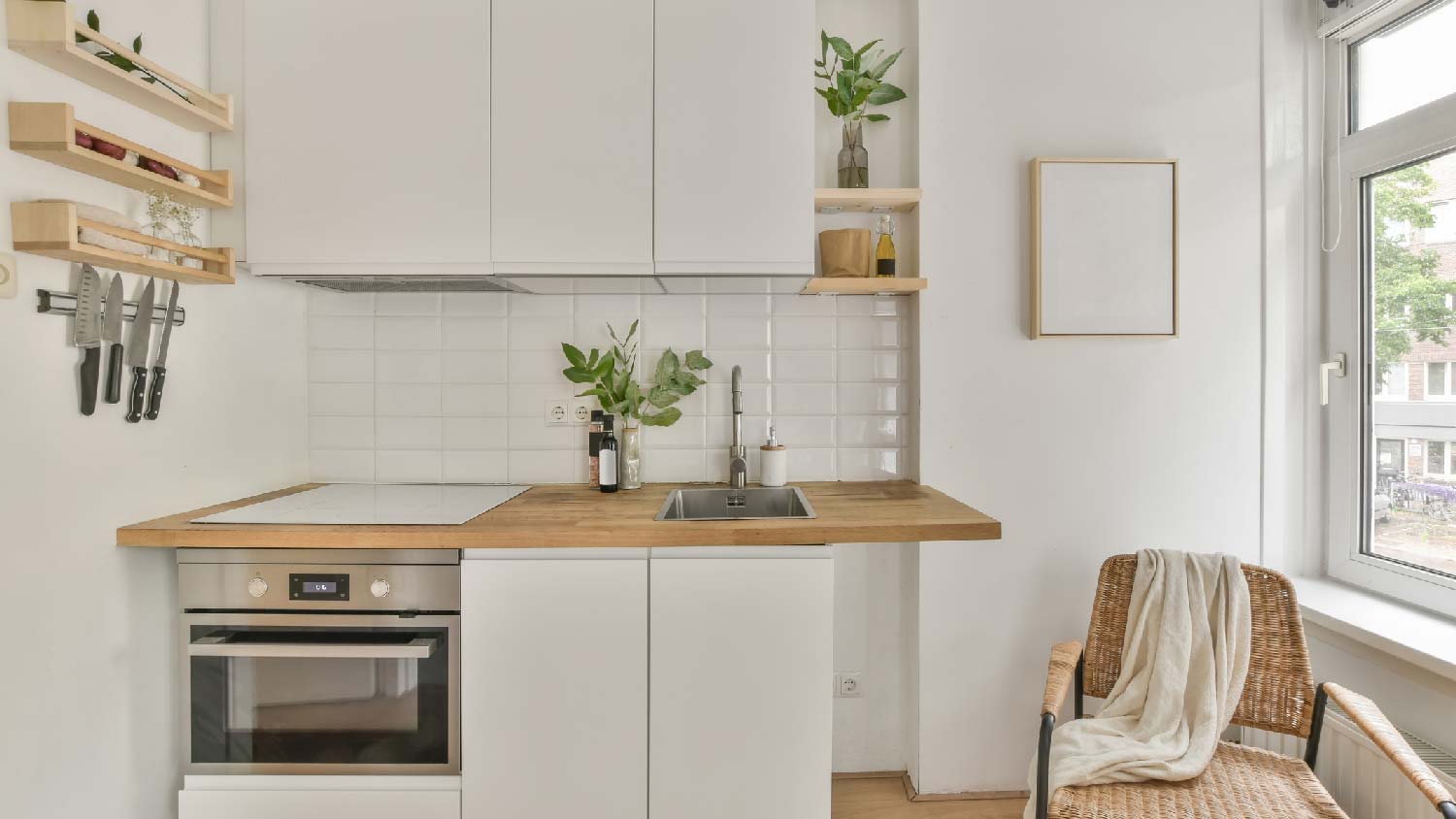
MDF stands for medium-density fiberboard, sometimes referred to as engineered wood. It's made from recycled wood particles mixed with wax and resin, compacted, dried, bound with an adhesive, and pressed into panels under high heat and pressure. The resulting panels are very dense and heavier than solid wood.
| Pros | Cons |
|---|---|
| Paint finishes smooth and won’t crack | Not as strong as solid wood |
| Resists environmental changes in humidity | Easily scratched |
| Remains stable and won’t crack or warp | Cannot sand down to repair |
| Lower price point than solid wood | Does not take stain easily |
Best for:
Those who want a smooth, painted finish
Cabinet door faces
MDF cabinets are well-liked by builders because they're more affordable than solid wood and are made from a stable material that's easy to cut and shape without risk of cracking. This stability also means that MDF panels stand up to changes in humidity without warping.
Because MDF panels are made from wood fibers, they don't retain solid wood's natural grain, knots, or texture. This means they're extremely smooth and lend themselves well to a seamless paint finish that won't crack when dry.
Despite its advantages over solid wood, MDF is not as strong and is easily scratched. It’s also technically more susceptible to water damage, though cabinetry is sealed, so this isn’t typically an issue. One of the biggest drawbacks is that it cannot be sanded down and reused the way solid wood can. This means that when MDF is damaged, it cannot be easily repaired. While it’s great for a painted finish, MDF does not take stain as easily as solid wood.
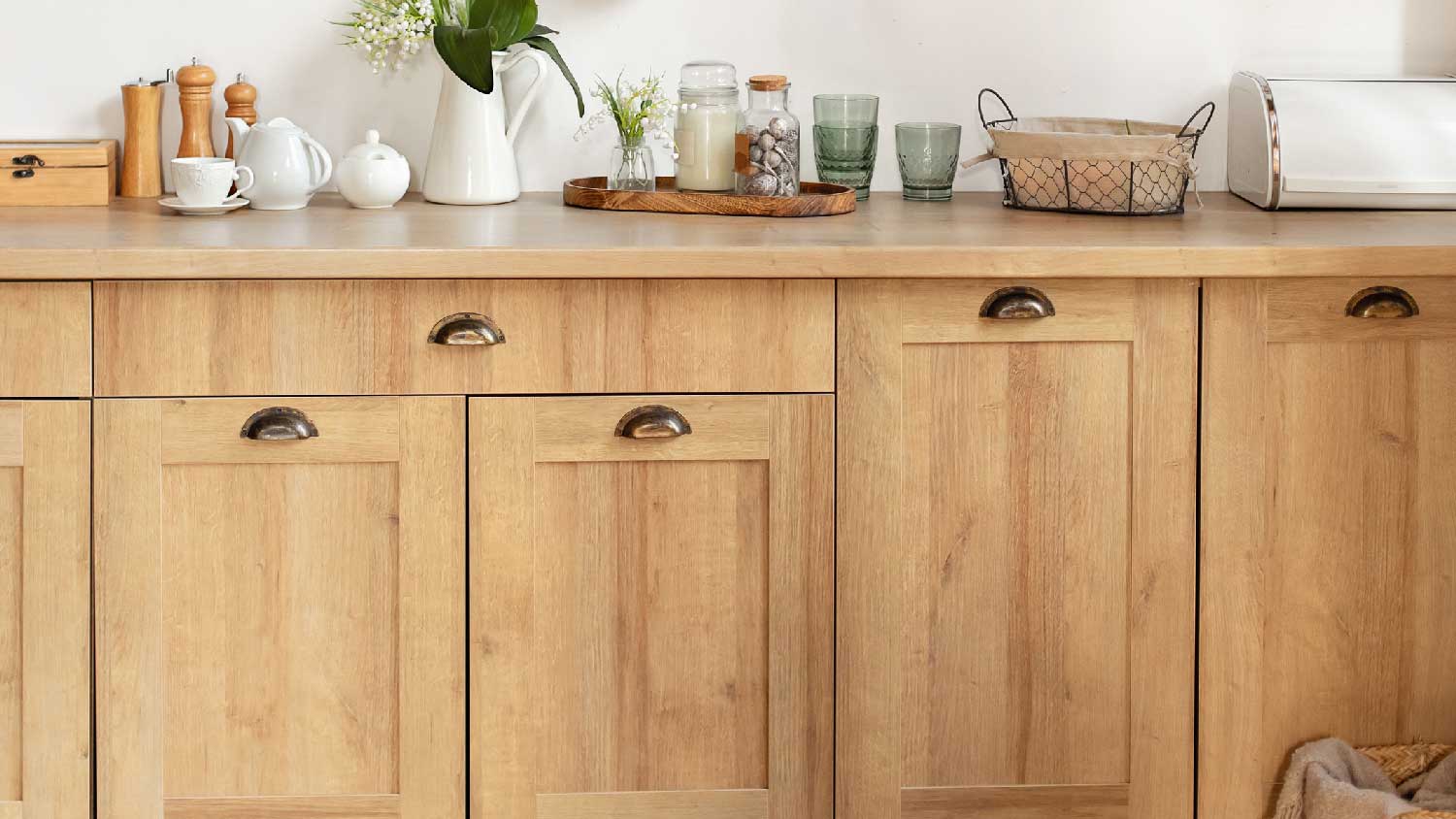
Solid wood cabinets are made of slabs of natural hardwood, commonly maple, birch, cherry, oak, and walnut. Each offers a unique aesthetic in terms of color and wood grain. Because solid wood cabinetry is a natural product, no two pieces look exactly alike, with unique knots, grains, and textures in every piece.
| Pros | Cons |
|---|---|
| Looks beautiful with paint or stain | May warp and crack with changes in humidity |
| Available in many different wood species | Higher cost than MDF panels |
| Increases the value of a home | Must be sealed regularly to prevent damage |
| Can be sanded and refinished multiple times |
Best for:
Those who want the look of a natural wood grain
Cabinet boxes and shelves
Wood cabinets offer enhanced strength and durability over MDF cabinets. Plus, solid wood panels retain the natural grain, knots, and texture that make each piece unique. Solid wood can be painted but also accepts a variety of wood stains if you prefer to preserve the look of the grain.
You'll find solid wood cabinets made from a variety of wood species. Each offers distinct colors, patterns, and hardness levels to suit your needs and preferences. Regardless of the wood you choose, you'll be able to sand and refinish it multiple times in case of damage or a change in design. Solid wood also increases the value of your home due to its quality.
Solid wood cabinets are more expensive than MDF cabinets on average. Because they're made from natural wood, they tend to react to environmental changes in the home. They may expand with humidity and contract with dry winter air, which can cause them to warp and crack over time. Solid wood must also be regularly sealed to prevent moisture damage.
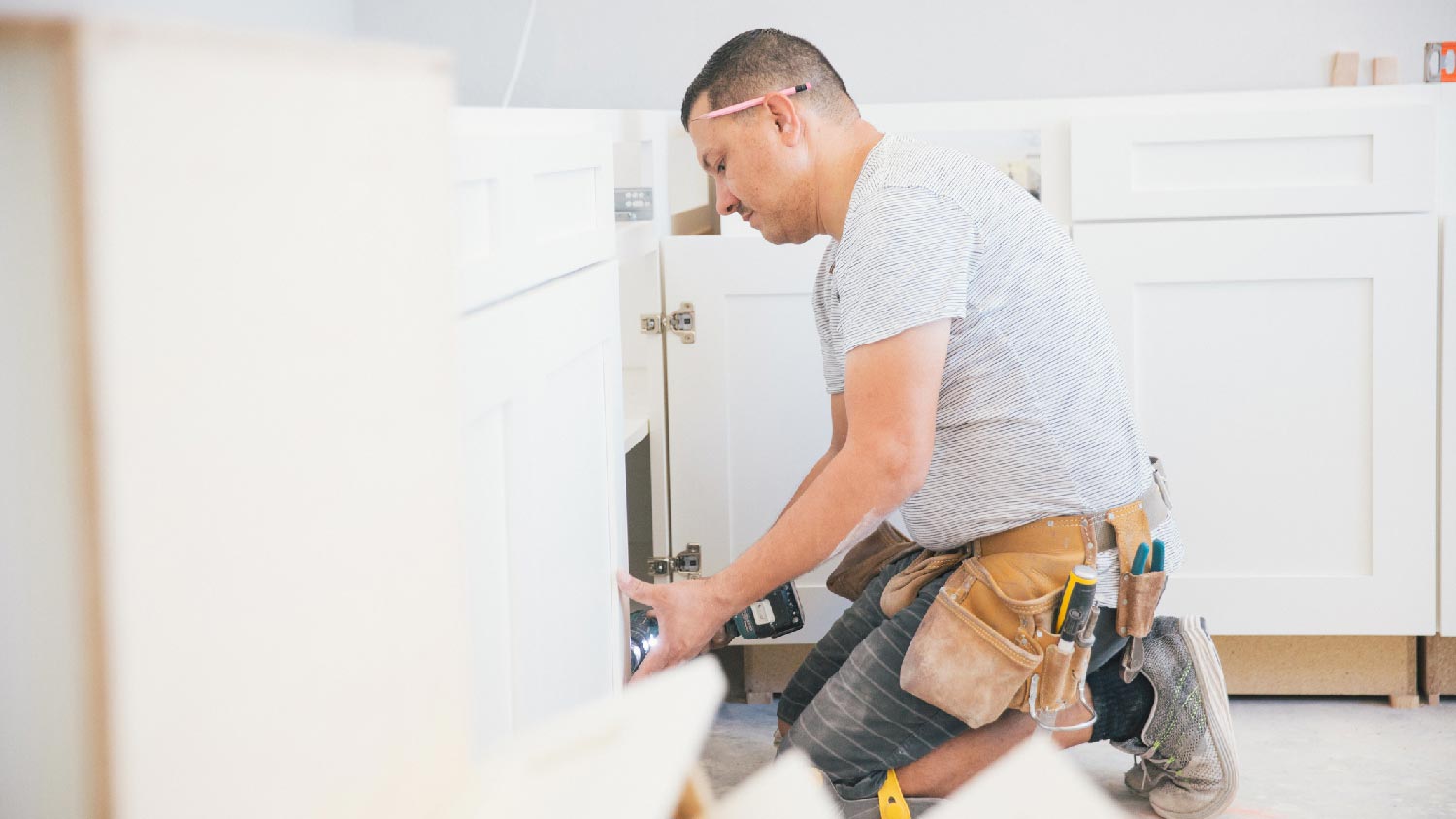
We’ve compared MDF and wood cabinets directly across several categories.
When it comes to looks, wood stands alone for its unique grains, knots, and textures. Although MDF offers a smoother paint finish, wood can be painted or stained for a wider variety of customization options. Wood is also available in various species with distinct colors and grains.
Solid wood cabinets are more durable than MDF cabinets, but only by a little. MDF panels are still very dense and will last a long time when cared for properly.
One of the biggest advantages of MDF cabinets is the lower material cost. Expect the total cost of MDF cabinets for an entire kitchen to be between $2,000 and $7,000. In contrast, solid wood cabinets could cost from $5,000 to $25,000.
Because wood cabinets are made from solid pieces of natural wood, you can sand and refinish them repeatedly to change their appearance and remove damage. MDF cannot be sanded, and the best solution for most damage is full replacement.
Solid wood cabinets have a long life span of 50 years or more. In contrast, MDF cabinets only tend to last up to 20 years.
Across most of the categories we've considered, wood cabinets win out over MDF cabinets. Wood is stronger, lasts longer, and offers a wider variety of visually appealing options than MDF.
That said, MDF cabinets are much less expensive than solid wood cabinets. This makes them more accessible for homeowners renovating a kitchen on a budget. MDF cabinets may not last as long as wood, but they still have a life span of up to 20 years.
The right choice for your home will likely come down to both the look you want to achieve and the budget you're working with. Talk to a cabinet installer near you for additional guidance.
From average costs to expert advice, get all the answers you need to get your job done.

Choosing new cabinet hardware is a fun balance of practicality and design. Costs range between under $100 and up to five figures, though, so budgeting and knowing which materials you can afford is key. This cost guide breaks it all down.
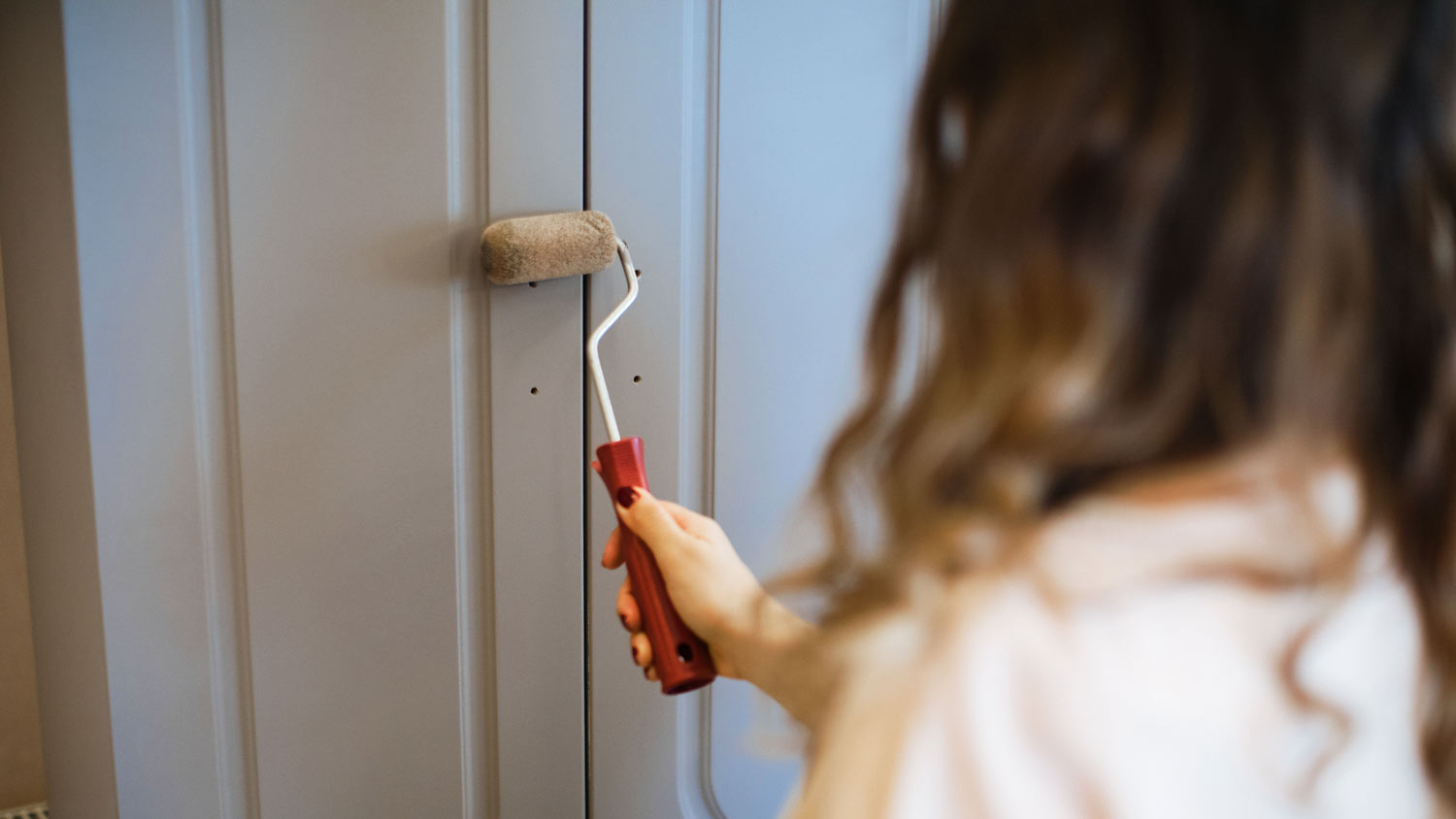
Discover the cost to paint kitchen cabinets, including average prices, cost factors, and tips to help you budget and save on your next kitchen update.
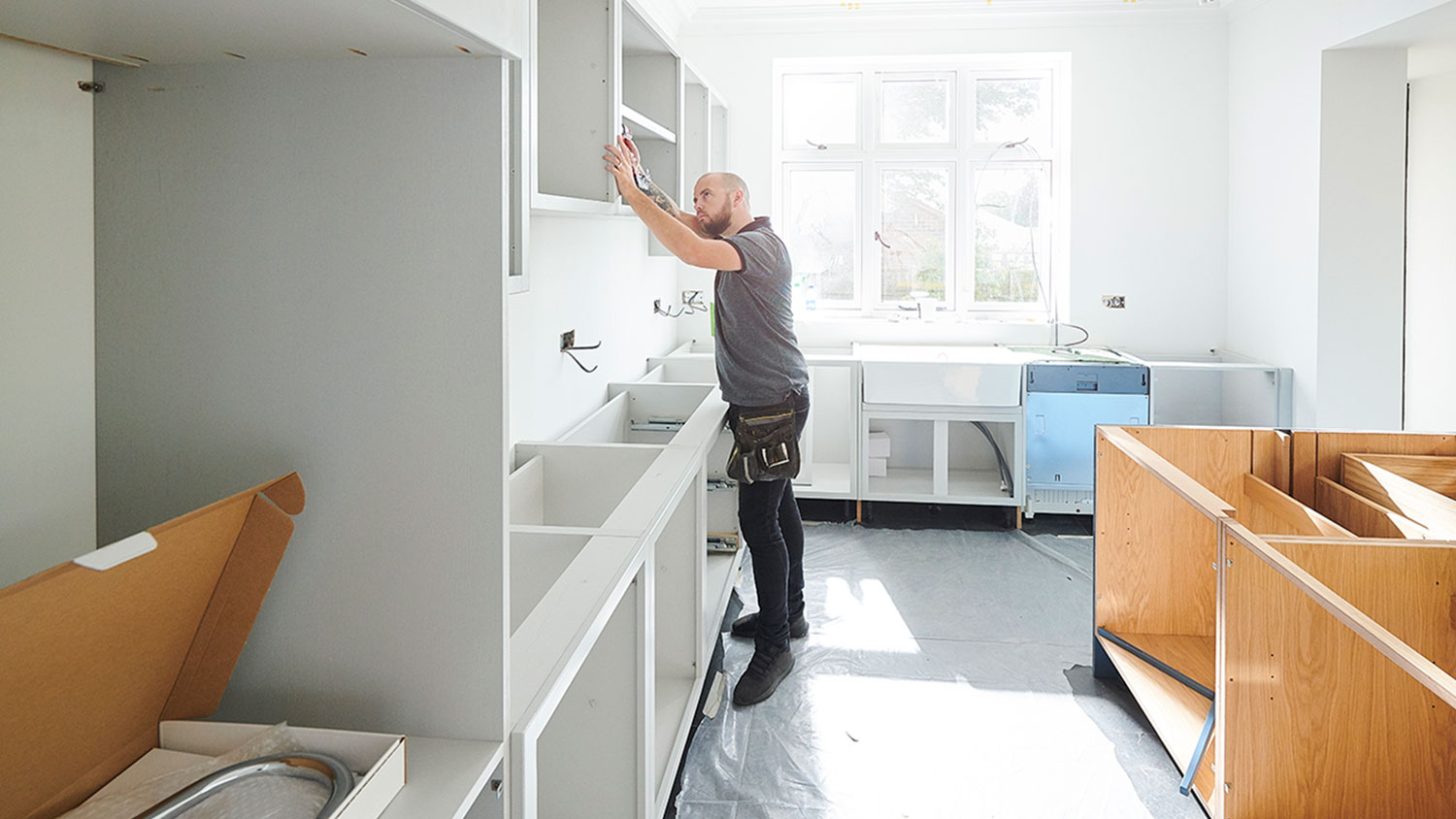
Discover cabinet installation cost estimates, including average prices, key cost factors, and tips to save on your new kitchen or bathroom cabinets.

Wondering what the difference is between full vs. partial overlay cabinets? This guide covers the ins and outs of these common cabinetry styles.

Learn how to replace drawer slides in a few easy steps to replace broken ones or change the appearance of your cabinets.

Wondering who to hire for built-in bookshelves? Learn how to choose the best pro for the job with this informative guide.